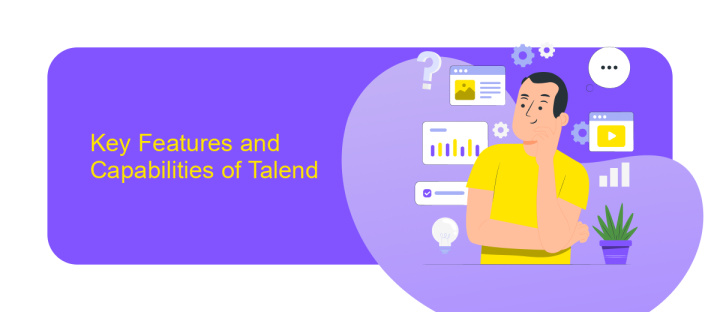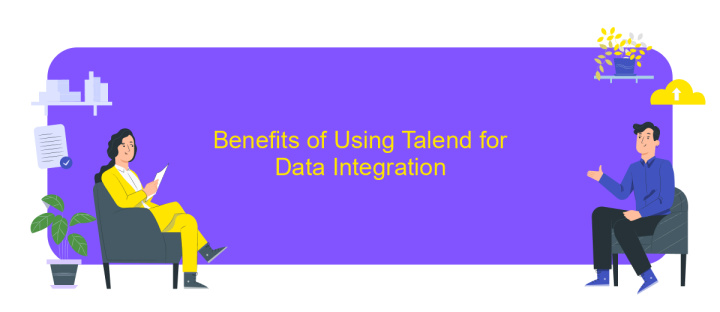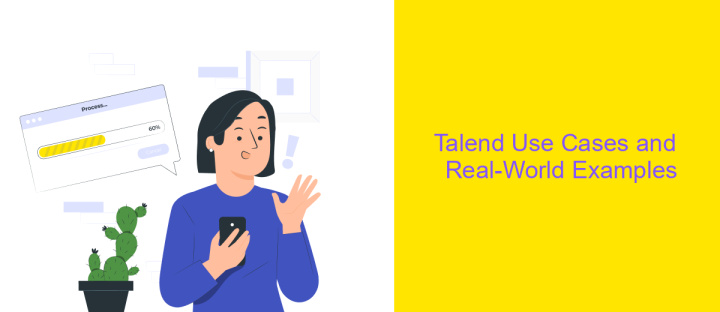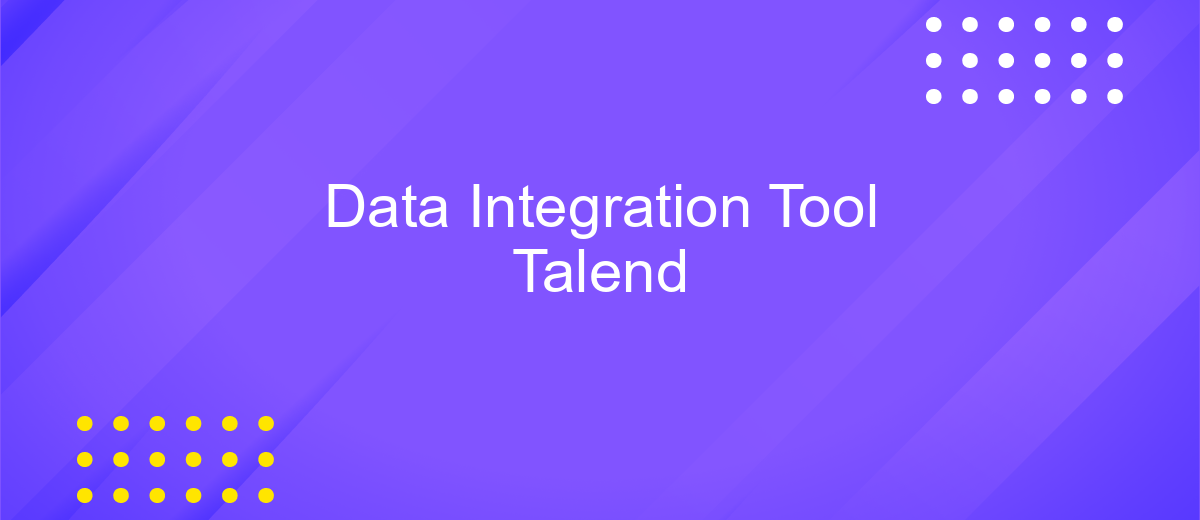Data Integration Tool Talend
Talend is a leading data integration tool designed to streamline and simplify the process of managing diverse data sources. With its open-source roots and robust capabilities, Talend enables organizations to efficiently extract, transform, and load data, ensuring seamless connectivity across various platforms. Its user-friendly interface and comprehensive features make it an ideal choice for businesses aiming to enhance data accuracy, consistency, and accessibility in today's data-driven world.
Introduction to Talend and Data Integration
Talend is a powerful open-source data integration tool renowned for its ability to streamline and simplify complex data processes. It offers a comprehensive suite of applications designed to facilitate data integration, data management, and data quality. With Talend, organizations can efficiently manage vast amounts of data from various sources, ensuring seamless data flow and accessibility. Its user-friendly interface and robust features make it an ideal choice for businesses looking to enhance their data handling capabilities.
- Open-source flexibility: Talend provides a cost-effective solution with a community-driven approach.
- Comprehensive suite: It includes tools for data integration, data quality, and data preparation.
- Scalability: Talend supports both small-scale and large-scale data integration projects.
- Real-time processing: Enables real-time data processing and analytics.
- Cloud integration: Seamlessly integrates with cloud platforms for enhanced data management.
Data integration is crucial in today's data-driven world, and Talend stands out as a reliable solution for businesses aiming to harness the full potential of their data. By integrating data from disparate sources, Talend empowers organizations to make informed decisions, improve operational efficiency, and gain a competitive edge. Its adaptability and robust feature set make it a valuable asset in any data strategy.
Key Features and Capabilities of Talend

Talend is a powerful data integration tool that offers a wide range of features designed to streamline and enhance data management processes. One of its key capabilities is the ability to connect and integrate data from multiple sources, both on-premises and in the cloud, providing a unified view of information. Talend supports a variety of data formats and protocols, ensuring compatibility with diverse systems. It also provides robust data transformation and cleansing functionalities, enabling users to enhance data quality and consistency across different platforms.
Additionally, Talend offers advanced data governance features, including metadata management and data lineage tracking, which help organizations maintain compliance and transparency. Its intuitive drag-and-drop interface allows users to design complex workflows with ease, reducing the need for extensive coding. For businesses looking to automate their data integration processes, Talend integrates seamlessly with services like ApiX-Drive, which can further simplify and automate data workflows across various applications. This combination of features makes Talend a versatile and efficient solution for organizations aiming to optimize their data integration strategies.
Benefits of Using Talend for Data Integration

Talend is a powerful data integration tool that offers a comprehensive suite of capabilities to streamline data management processes. It is designed to handle various data integration challenges, making it an ideal choice for organizations looking to improve their data workflows. With its user-friendly interface and robust features, Talend simplifies the integration of complex data systems, allowing businesses to focus on deriving insights and making informed decisions.
- Scalability: Talend's architecture supports scaling from small projects to enterprise-level solutions, accommodating growing data needs.
- Open Source Flexibility: As an open-source tool, Talend provides flexibility and customization, enabling users to tailor solutions to specific requirements.
- Comprehensive Connectivity: Talend offers extensive connectivity options, supporting a wide range of data sources and formats, ensuring seamless integration.
- Real-time Data Processing: The tool enables real-time data processing, allowing businesses to react swiftly to changing data landscapes.
- Cost-effective: Talend offers a cost-effective solution with its open-source model, reducing the financial burden on organizations.
By leveraging Talend for data integration, organizations can enhance their data management capabilities, leading to improved operational efficiency and better decision-making. Its comprehensive features and adaptability make it a valuable asset for businesses aiming to harness the full potential of their data resources.
Talend Use Cases and Real-World Examples

Talend is a versatile data integration tool that finds applications across various industries. Its ability to handle complex data transformations and integrations makes it invaluable for businesses looking to streamline their data processes. Talend is particularly effective in scenarios that require seamless data flow between disparate systems, ensuring data consistency and quality.
In the financial sector, Talend is used to integrate data from multiple sources for comprehensive reporting and analysis. Retail companies leverage Talend to manage and analyze customer data from various touchpoints, enabling personalized marketing strategies. Healthcare organizations utilize Talend to ensure patient data is accurately integrated across different systems, enhancing patient care and operational efficiency.
- Telecommunications: Automating data migration and integration for improved customer service.
- Manufacturing: Streamlining supply chain data for better inventory management.
- Education: Integrating student information systems for unified data access.
By providing a robust platform for data integration, Talend empowers organizations to make informed decisions based on accurate and timely data. Its flexibility and scalability allow it to adapt to different business needs, making it a preferred choice for companies aiming to enhance their data-driven capabilities.
Conclusion and Future Trends in Data Integration with Talend
Data integration with Talend has proven to be a robust solution for organizations aiming to streamline their data processes. Talend's comprehensive suite of tools enables seamless data integration, transformation, and management, fostering enhanced decision-making and operational efficiency. As businesses increasingly rely on data-driven strategies, the need for efficient integration solutions like Talend becomes critical. Its user-friendly interface and extensive connectivity options make it a preferred choice for enterprises aiming to integrate disparate data sources into a cohesive system.
Looking ahead, the future of data integration with Talend is likely to be shaped by advancements in automation and artificial intelligence. As technologies evolve, tools like Talend are expected to incorporate more AI-driven features to enhance data processing and analysis. Additionally, integration platforms such as ApiX-Drive may play a crucial role in simplifying the setup of integrations, offering automated workflows and real-time data synchronization. This trend towards automation and real-time data integration will empower businesses to react swiftly to market changes and enhance their competitive edge.
FAQ
What is Talend Data Integration Tool?
How does Talend handle data quality issues?
Can Talend integrate with cloud-based data sources?
What is the learning curve for using Talend?
How can automation and integration be streamlined using Talend?
Time is the most valuable resource for business today. Almost half of it is wasted on routine tasks. Your employees are constantly forced to perform monotonous tasks that are difficult to classify as important and specialized. You can leave everything as it is by hiring additional employees, or you can automate most of the business processes using the ApiX-Drive online connector to get rid of unnecessary time and money expenses once and for all. The choice is yours!

